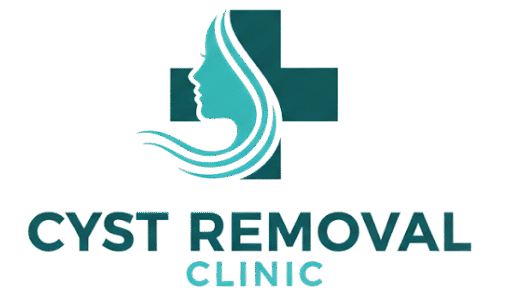Cyst removal is designed to be a permanent solution, but in some cases, a cyst can return months or even years later. Whether this happens depends largely on how the cyst was treated and whether its capsule (or sac) was removed completely.
At Cyst Removal Clinic London, our doctors use precise techniques to remove the cyst and its capsule in one procedure — significantly reducing the risk of recurrence.
Why some cysts come back
A cyst forms when skin cells or oil glands become trapped under the skin, creating a sac that fills with keratin or sebum. If any part of that sac remains after treatment, it can start refilling again — leading to a new cyst in the same spot.
The most common reasons for recurrence include:
1. Incomplete capsule removal
If the cyst’s wall tears or fragments during the procedure, small remnants can be left behind. Over time, these cells may produce more keratin, gradually reforming the cyst.
2. Previous infection or inflammation
Infected cysts are more fragile, and removing them while inflamed can make it harder to extract the wall intact. That’s why doctors often drain the infection first, then perform surgical excision later when the tissue has healed.
3. Self-drainage or home removal attempts
Trying to squeeze or pop a cyst at home releases some fluid but leaves the capsule under the skin. This often leads to temporary relief followed by recurrence — and sometimes infection or scarring.
4. Genetic tendency or multiple cysts
Some people are naturally prone to forming new cysts, especially on the scalp or back. These are not recurrences of the same cyst but new ones forming nearby.
How recurrence is prevented
The most reliable way to stop a cyst from coming back is to remove it completely and carefully — including the entire capsule.
At Cyst Removal Clinic, our doctors use several methods to ensure complete clearance:
1. Complete surgical excision
The gold-standard treatment for larger or deep cysts. The doctor removes the cyst and its wall in one piece through a small incision. Once the capsule is gone, recurrence is extremely unlikely.
2. Minimal excision technique
For smaller cysts, a small incision is made, and the entire capsule is gently extracted through it. This offers a clean result with minimal scarring.
3. Delayed excision after infection
If a cyst is inflamed or infected, it’s drained first and allowed to heal before complete removal. This two-step approach avoids rupture of the capsule and ensures full clearance later.
4. Gentle dissection and fine suturing
Minimising trauma and tension during closure helps the wound heal smoothly and reduces the risk of trapped tissue that could regrow.
When performed correctly, recurrence rates after full excision are very low — typically less than 5%.
What to look for after removal
After a cyst is removed, it’s important to monitor the area as it heals.
Signs that a cyst might be returning include:
- A small, firm lump under the scar after several weeks or months
- Gradual enlargement of that lump
- Tenderness, redness, or swelling in the same spot
- Occasional discharge of fluid or keratin
Not every small bump indicates recurrence — sometimes, it’s just scar tissue or a minor follicle blockage. However, if the area changes in size or becomes sore, it’s worth having it checked.
What to do if a cyst comes back
If a cyst reappears after removal, it can be treated easily. Your doctor will assess whether it’s a true recurrence or a new cyst forming nearby.
Treatment options may include:
- Repeat excision – to remove any remaining capsule fragments.
- Drainage and delayed removal – if infection is present.
- Observation – if the lump is small, painless, and stable.
Recurrence doesn’t mean anything was done incorrectly — it simply means the cyst wall regenerated or a new cyst developed close to the old one. The second removal is usually more straightforward because the area has already been assessed and mapped.
How to reduce your risk of recurrence
While some cysts form unpredictably, a few habits can help minimise recurrence:
1. Avoid squeezing or pressing cysts.
This can rupture the sac and spread cyst material into surrounding tissue.
2. Treat infections early.
If a cyst becomes inflamed, see a doctor before it worsens. Prompt antibiotics or drainage prevent deeper scarring and tissue changes.
3. Keep your skin clean and exfoliated.
For people prone to blocked pores or follicular cysts, gentle exfoliation helps reduce oil buildup.
4. Follow aftercare instructions.
Proper wound care during healing reduces irritation and scar blockage that can trigger new cysts.
5. Choose an experienced practitioner.
Recurrence rates are lowest when removal is done by a trained medical professional who ensures full capsule excision.
Is recurrence more common in certain types of cysts?
Yes — some cysts are slightly more prone to recurrence than others:
- Epidermoid cysts – may return if removed after infection or rupture.
- Sebaceous cysts – can recur if the oil gland continues to overproduce sebum.
- Pilar cysts (scalp) – sometimes hereditary, leading to new cysts in nearby follicles.
- Ganglion cysts (wrist or hand) – have the highest recurrence risk, even after surgery, due to joint fluid connection.
In all cases, meticulous surgical technique and good aftercare significantly reduce the chance of return.

